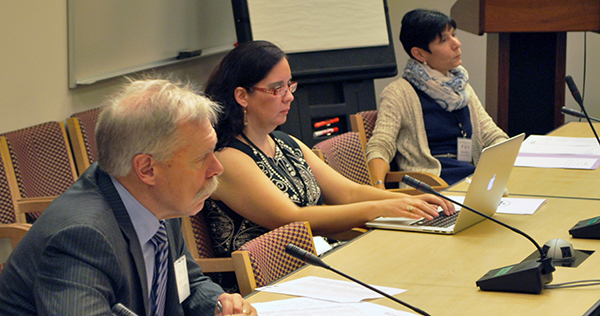
The workshop featured six speakers, two to open each day and one at each lunch session:
- Freeman A. Hrabowski, III, President, the University of Maryland, Baltimore County
- Robert T. Teranishi, Associate Professor of Higher Education, New York University, and Professor of Education, UCLA
- Eric Jolly, President, Science Museum of Minnesota
- Karan L. Watson, Provost and Executive Vice President for Academic Affairs, Texas A&M University
- Amir Mirmiran, Dean, College of Engineering and Computing, Florida International University
- Patricia B. Campbell, President, Campbell-Kibler Associates
Summaries of their addresses are provided in Section VI. The rest of the workshop consisted of small-group discussions of issues identified and framed by the speakers. The small groups reported to plenary sessions at the end of each day, allowing attendees to hear ideas from a complete cross-section of their peers. (The workshop agenda is in Appendix B.)
The small-group breakout sessions were designed to illuminate the underlying impediments to ethnic diversity in engineering education; to consider concrete steps toward overcoming the barriers to greater diversification; and to identify models of local success that could be moved to large-scale implementation.
On the morning of the first day, breakout group attendees addressed six strategic themes:
- Inculcating and reinforcing students’ academic and professional knowledge
- Pedagogical improvements (targeted to current and future teachers and students)
- Organizational receptivity to ethnic diversity
- Economic enablement
- Public and community education and institutional involvement
- More educational research and policy development
They discussed impediments to the adoption of these strategies, pooled their experiences, shared success stories, and identified nuances of the impediments. After lunch, each group returned to the same themes/impediments, but this time focused on next steps, brainstorming strategies to overcome the impediments. These strategies were communicated to the whole workshop at the afternoon plenary session on Day One.
Day Two followed a similar format, with a morning session to discuss impediments and share successes and an afternoon session to brainstorm solutions, followed by a report-out at a plenary session. This time, however, attendees were organized into groups arranged primarily by geography. This arrangement was used in recognition of unique challenges and opportunities in different states’ educational systems (e.g., strong statewide articulation arrangements1 in Florida), legal environments (e.g., affirmative-action bans in California and Michigan), minority population demographics, and state support and other funding. As a result, in the plenary session on Day Two attendees heard how colleagues from different areas of the country saw the way forward given their particular circumstances. Meal times were designed to encourage networking and included two informal dinners (the first, on the eve of the conference, was not a formal part of the workshop but was well attended).
____________
1 Articulation is a process by which academic institutions allow students to use courses completed (often with a certain minimum grade) at one institution to satisfy course requirements at another institution to which the student is transferring. This mitigates students’ having to repeat courses after transferring.

